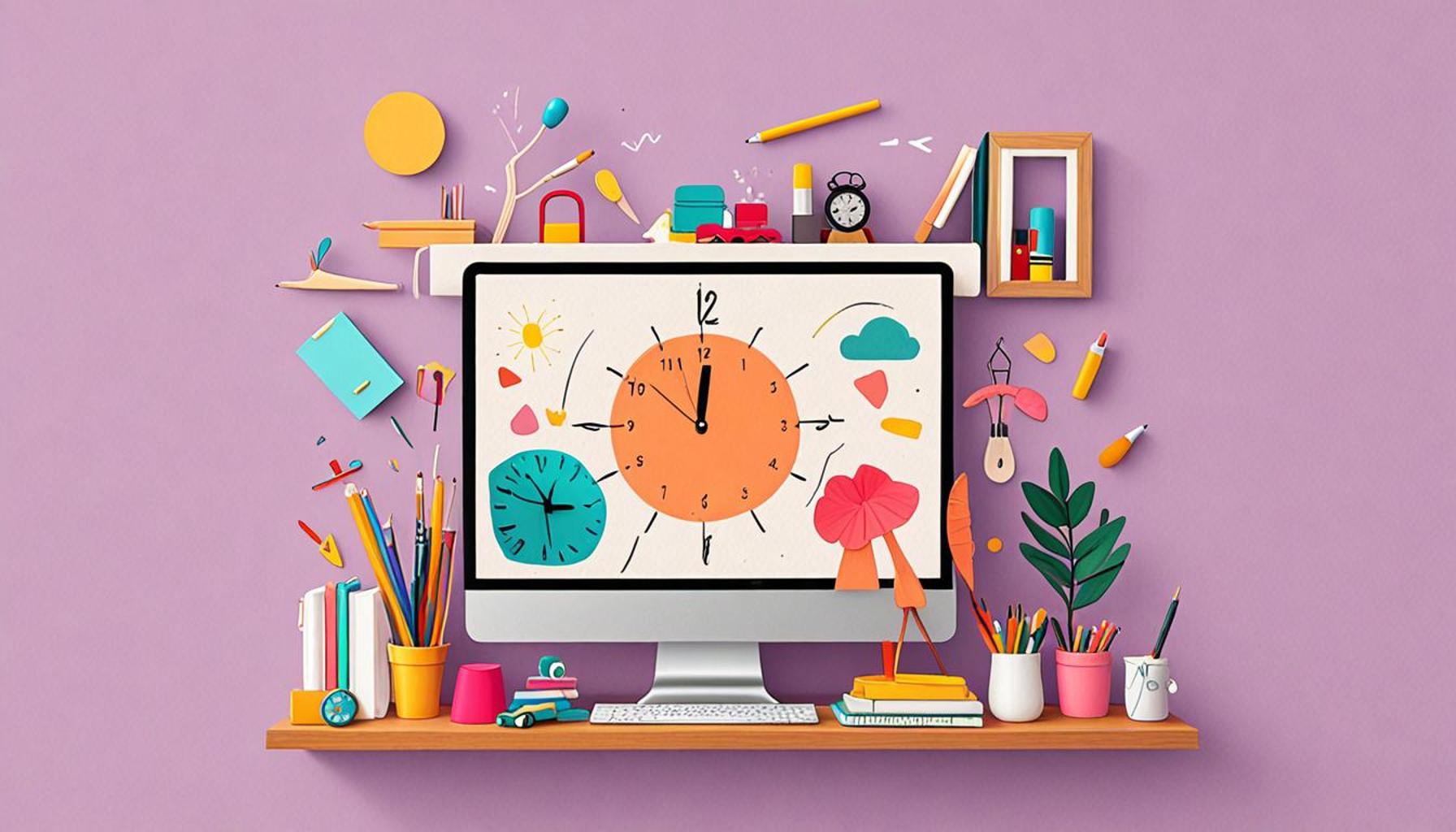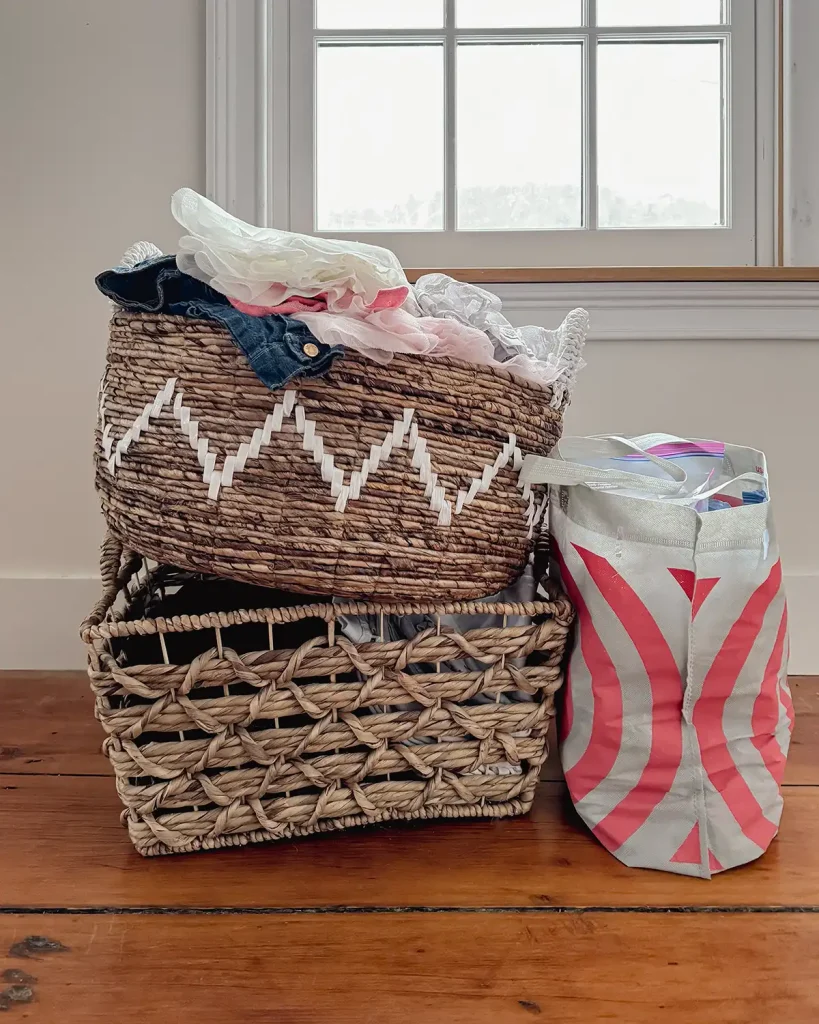Creating a Decluttering Schedule: How to Plan Your Minimalist Journey

Understanding the Minimalist Journey
Embarking on a minimalist journey can be both liberating and overwhelming, particularly for those who may feel entrenched in their belongings. Moreover, creating a decluttering schedule can serve as a cornerstone for successfully transforming not only your living space but also your mindset. Instead of tackling the entire house at once, which can seem daunting, breaking the decluttering process into manageable steps makes it feasible and empowering.
Consider these benefits of having a structured approach:
- Reduces Stress: Clutter can lead to overwhelming feelings and anxiety. By having a plan, you can systematically eliminate the chaos associated with clutter, making your environment feel more serene and organized.
- Enhances Productivity: Focusing on one area at a time allows for greater efficiency. For instance, spending a weekend solely decluttering your workspace can yield immediate improvements in your focus and output.
- Sets Clear Goals: Establishing a timeline motivates you to adhere to your schedule. Setting realistic milestones, such as “Today I will sort through my bedroom closet,” keeps you accountable and engaged in the process.
Targeting Specific Areas
Understanding your personal needs and setting realistic expectations are key components in your minimalist journey. Many people find success by targeting specific areas in a strategic manner:
- Bedrooms: This is often the best place to start. Assess your clothing and accessories with a critical eye. Did you wear that jacket last winter? If not, it may be time to let it go.
- Living Areas: Consider reducing decor and furniture that no longer serves a purpose, such as items that are purely decorative and don’t add to your comfort or function.
- Basements and Attics: These areas can become catch-all spaces. Take inventory of outdated or unused items, and if they haven’t been seen in over a year, see if someone else might benefit from them.
Beyond Decluttering
Moreover, the journey doesn’t end with decluttering; it evolves into maintaining a minimalist lifestyle. With an effective decluttering schedule, each step forward propels you toward a simpler, more intentional life. It encourages you to prioritize quality over quantity, embracing a lifestyle free from the excess that often bogs us down.
As you delve deeper into minimalism, you may discover how intentionality and clarity can transform your daily experience. Minimalism is more than just a trend; it can be a sustainable way of living that resonates deeply, especially in a fast-paced society that often equates possessions with happiness. By adopting a minimalist mindset, you open yourself to a life where what truly matters takes precedence, inspiring you to cultivate deeper relationships and experiences.

Ultimately, a well-structured decluttering plan offers a clear path forward, allowing you to reclaim your space and, fundamentally, your peace of mind.
DISCOVER MORE: Click here to enhance your space
Creating Your Decluttering Schedule
When it comes to creating a decluttering schedule, a clear and organized plan is essential to navigating your minimalist journey effectively. The key lies in combining your goals with a timeline that feels achievable, allowing you to tackle each task without feeling overwhelmed. A well-organized schedule not only serves as a roadmap but also aids in fostering a commitment to your newfound lifestyle. Here are several steps to consider as you craft your decluttering schedule:
- Set Your Intention: Before diving into decluttering, take a moment to outline your motivations. Understand your reasons for wanting to embrace minimalism—be it to ease stress, create more space, or focus on experiences rather than possessions. Writing down your intentions can provide clarity and serve as a reminder that fuels your dedication as you progress.
- Designate Time Blocks: Choose dates and times that work best for you to allocate towards decluttering. Whether it’s a few hours on a weekend or short bursts throughout the week, setting aside dedicated time in your calendar ensures that decluttering becomes a priority rather than an afterthought. It’s advisable to start with smaller periods and increase them as you gain confidence.
- Organize by Category: Instead of focusing on each room gradually, approach decluttering through categories such as clothing, books, kitchenware, and sentimental items. This method, popularized by Marie Kondo, allows you to see how much of each category you actually own, helping you realize which items bring you joy and which do not.
Establishing Milestones and Rewards
Creating milestones in your decluttering schedule can not only keep you on track but also provide a sense of accomplishment along the way. These milestones might include completing an entire category or organizing a specific room. You might say to yourself, “By the end of this month, I want to have sorted through my entire wardrobe.” Celebrating these achievements, no matter how small, can reinforce your motivation.
Incorporating rewards can also enhance the decluttering experience. After completing a task, treat yourself to something enjoyable, such as a favorite meal, a walk in nature, or a relaxing evening with a good book. This positive reinforcement makes the process feel less like a chore and more like a fulfilling journey.
As you establish a decluttering schedule, remember to allow for flexibility. Life can be unpredictable, and it’s okay to adjust your timeline as needed. The aim is to create a sustainable habit rather than meet a strict deadline. As you continue to shape your minimalist lifestyle, you will find that the act of letting go becomes more intuitive and less emotional, allowing you to fully immerse yourself in the benefits of living with less.
| Category | Key Features |
|---|---|
| Time Management | A well-structured decluttering schedule allows for efficient time allocation to decluttering tasks, enabling one to manage other responsibilities. |
| Mental Clarity | Engaging in a scheduled decluttering process can result in improved focus and a sense of accomplishment, reducing stress and enhancing productivity. |
| Goal-Oriented Approach | Setting clear objectives for each decluttering session can help in sustaining motivation and tracking progress throughout your minimalist journey. |
| Healthy Habit Formation | Following a schedule instills a routine that encourages the regular practice of decluttering, cultivating lifelong habits beneficial for minimalism. |
Creating a decluttering schedule is not merely about clearing physical spaces; it’s a fundamental shift in how you approach your lifestyle. One of the most profound aspects of this process is the mental shift it fosters. Not only does a planned approach yield tangible benefits in terms of organization, but it also contributes to overall emotional well-being. As you navigate this journey, remember that each box packed or item donated is a step towards a more simplified, intentional existence. Be sure to engage with communities and resources that share similar values, as they can provide support and inspiration as you refine your minimalist strategy.
DISCOVER MORE: Click here to delve deeper
Overcoming Challenges in Your Decluttering Journey
While embarking on a decluttering schedule can be an exciting endeavor, it’s essential to recognize potential challenges that may arise during your minimalist journey. These obstacles can be emotional, logistical, or even psychological. Addressing these challenges proactively can help you maintain your momentum and remain committed to your goals.
Emotional Attachment to Items
One of the most significant hurdles in decluttering is overcoming emotional attachment to possessions. Many individuals thrive on nostalgia, holding onto items associated with special memories, family heirlooms, or gifts. However, it’s crucial to ask yourself whether these items contribute positively to your life today. Consider adopting a mindset that values memories over physical objects. This can be particularly useful for items like old toys or clothing that may no longer serve a purpose. You might take pictures of the items that hold sentimental value and then let them go, retaining the memories without the clutter.
Finding the Right Donation and Disposal Methods
Logistical challenges often arise regarding what to do with items you no longer need. Local charities, shelters, and recycling centers are excellent resources for responsibly disposing of unwanted goods in the United States. Websites like Give Back Box allow you to donate items through convenient shipping options, making it easier than ever to contribute while decluttering. Furthermore, organizing donation pickups in your area can save you time and effort. Research options that align with your values and make your decluttering process more rewarding.
Maintaining Motivation Over Time
As you journey through your decluttering schedule, it’s natural for your initial enthusiasm to wane. To combat this, consider setting up accountability measures. This can involve sharing your goals with a friend, family member, or even a local decluttering group. Regular check-ins can boost motivation and encourage you to stay on track. Additionally, documenting your progress through photos or journaling can help you visualize the transformation of your space and solidify your commitment to this lifestyle shift.
Staying Focused Amidst Everyday Life
Life’s busyness does not stop while you embark on your minimalist journey. Balancing decluttering with work, family, and social obligations can sometimes feel overwhelming. To counteract this, you might divide larger decluttering tasks into smaller, more manageable segments, making it easier to integrate them into your daily routine. For example, setting a goal to declutter a single drawer or shelf per week can create significant progress over time without overwhelming your schedule.
Moreover, consider utilizing household downtime for small decluttering tasks. Waiting for the kettle to boil? Spend those few minutes sorting through a magazine pile. These small, consistent actions accumulate and lead to meaningful change.
Engaging the Family in the Decluttering Process
Involving family members in the decluttering process is vital, especially if you live with others. By inviting them to participate, you not only share the workload but also foster a collective understanding of the minimalist lifestyle. Engaging in family discussions about what items are meaningful and necessary can pave the way for a unified approach to your decluttering goals. Additionally, implementing shared decluttering days can strengthen relationships as everyone works towards a common goal, simplifying your living space while promoting family bonding.
As you create and refine your decluttering schedule, acknowledging these challenges and solutions empowers you to navigate your minimalist journey with confidence and intention.
DISCOVER MORE: Click here to learn how minimalism can enhance your workspace
Conclusion: Embracing a Minimalist Lifestyle through Effective Decluttering
Creating a decluttering schedule is more than just a plan; it is a roadmap to achieving a minimalist lifestyle that can bring clarity and peace to your living environment. Throughout this journey, understanding the challenges—ranging from emotional attachments to practical logistical issues—is key to successfully navigating your path to minimalism.
By approaching decluttering with intention, you set the stage for transformative change. Implementing small, manageable tasks allows you to see progress without feeling overwhelmed. As you develop a routine and engage your family, you foster a supportive atmosphere that reinforces your shared goals. Remember, minimalism is not solely about reducing your belongings; it is also about enhancing your quality of life, prioritizing essentials, and cherishing experiences over material possessions.
To ensure lasting motivation, consider tracking your progress or sharing your journey with others. Join local communities or online platforms dedicated to minimalism, where you can exchange tips and celebrate milestones. Such connections can provide the inspiration you need to persevere, especially when the initial excitement begins to fade.
Ultimately, the creation of your decluttering schedule is a personal journey. Embrace the process, seek solutions to obstacles, and remain committed to your minimalist vision. As you simplify your surroundings, you may discover the true value of living with intention—a life that encourages focus, peace, and fulfillment. Start today and unlock the myriad benefits that a decluttered space can bring.


